QuestionI have a 35 or 40 gallon tank, i bought the proper filter for that size tank and change the carbon about every 2 weeks, i am not sure about the chemistry of the tank, I have been using a treatment for the tank that is supposed to keep the tank "balanced". There are now 5 goldfish, 1 stubby goldfish, 1 black bulgy eyed goldfish, 2 algae eaters, and 2 dwarf frogs. (all fish have not been in the tank at the same time, most in tank at one time was 9 fish) Anyway, I have had the tank for about 3 months now and six fish have died (two goldfish, two of the small stubby goldfish, the black goldfish with the bulging eyes, and the beta died this morning. The beta was the first to die in about a month, since i have been using that water treatment. The beta had a white stringy thing hanging from its chin. I put him in another tank last night when i noticed it. I didn't notice any stringy thing on the other fish that died though, their main symptoms were staying at the bottom, no energy, and the black bulgy eyed goldfish had white spots, i thought that may be ich, but i am not sure. Anyway, here are my questions.
1)What kind of treatment can i get to treat the tank (the pet store is useless here, they seem to know nothing, the only place to get fish supplies here is the Walmart Department store)
2) should I clean out the tank? The guy at the pet store said that I should never have to clean the tank. The water is still clear, not dirty at all. (will the algae eaters die if i clean out the tank, they are the little brown ones, suckers on the bottom, thin, darker brown spots on top, fairly common type of fish according to the pet store)
3) I have a 10 gallon tank, can i put the fish on there until i have cleaned the tank (how long do I have to wait to put the fish back into the tank)
If there is anyting that you can do to help me, it would be greatly appreciated.
Alana
AnswerHi Alana;
It is so hard to get good info about fish in some places. Too bad they couldn't get you started the right way. A tank should never have to be totally emptied and cleaned. Doing this destroys the natural beneficial bacteria balance and you will go through the same thing you just experienced..... Death due to "New Tank Syndrome". NTS takes 6 to 8 weeks to complete after the first fish is added. New tanks should be started with only one inch of fish for every ten gallons of water. More than that and you risk losing some or all of the fish due to extreme levels of natural fish waste toxins. There will be some toxins when you start the tank with a small number of fish, but they will be tolerable and the tank will get started with less stress on the fish.
What you should do to get this tank going properly again is to make some partial water changes. Remove 25% of the water while vacuuming the gravel. Do this every day for the next 4 days. Don't remove the fish. It will stress them out more. They can find hiding places in their own tank as you do the cleaning. Make sure you add water conditioner to the the tank before adding the fresh water. Also be sure the fresh water is exactly the same temperature as the old water. This will help prevent your fish from going into shock.
Something else to remember is that goldfish are cold water fish. If there is a heater in the tank, don't buy any more goldfish. They like temperatures in the low 70's and upper 60's. Too high and they get weak and are easily stressed.
If there is no heater in the tank, the goldfish are okay but the betta is not. Contrary to common belief, bettas are tropical fish that need at least 75 degrees all the time to do well. Most of them that you see in tiny tanks and little bowls die in a short period of time if kept too cool. Bettas and goldfish just aren't compatable anyway. One or the other will get picked on.
Avoid all chemicals and additives that "balance" the tank. The only thing you need is a good water conditioner that removes chlorine/chloramine and helps the fish with sress. Everything else is a waste of money and can actually harm your fish. Water changes and avoiding things like too many fish and overfeeding are the only effective way to keep healthy fish.
Here is my article on new tanks to help you understand what happened when you started and other tips as well;
**********
New Tank Syndrome or Break-in Period
So you have a new tank and you filled it up, put the filter together, mounted the heater into place and turned on the lights. You have all the plants and decorations where you want them....
You are ready for fish.
But, your filter is not ready for a full tank of fish yet.
The filter is running and moving the water and cleaning out crud, right? Of course!
But a very important part of your filter is the part you can't see. An aquarium filter removes the larger visible stuff, but it also must remove the dissolved fish waste that turns into ammonia in the water. To do this, special bacteria must grow in the filter system and on the particles of gravel in the bottom of your tank. This process occurs even on a limited scale in little fish bowls that have no filter in them.
This is "New-Tank Syndrome" or the "Break-in Period". The entire process takes 6 to 8 weeks to complete because these "nitrifying" bacteria grow quite slowly.
Start off with only one or two hardy fish (no more than 2 total inches of fish) for every ten gallons of water and don't add more until the 6 to 8 weeks has gone by. Hard to be patient, but it is worth it to keep your fish alive and healthy. As a matter of fact, the bacteria cannot develop without fish in the tank. You can let that tank sit forever without fish in it, but as soon as the first fish goes in the process begins. Avoid changing the filter pads during break-in. This removes the bacterial colonies that are essential to a balanced aquarium. You can rinse the filter pad out in a container of aquarium water. This will preserve most of the bacteria colonies while still allowing your filter to flow freely. Even using bacteria additives and water conditioners when you first set up the tank will not make a tank begin the cycle by itself. If there are no fish to provide food (fish waste) for the bacteria, the beneficial bacteria cultures will die and you will have to start the colonies all over again once fish are added to the tank. Once the tank has completed the initial cycle, you can change the filter pads every 4 weeks or so. But for now, just rinse them.
Feed your new fish VERY lightly. Any excess food will cause additional waste your system cannot afford to have right now. If you see food floating around or lying on the plants and gravel after five minutes, too much food is going into the tank. Cut back a little each time you feed until it is ALL gone 5 minutes after you feed them. Feed them once a day.
During this "break-in period" your tank will become cloudy and milky looking. You may have to tolerate this for the entire break-in period but it is only temporary. Changing 25% of the water three times a week until the break-in period is over helps a great deal. Changing water reduces the ammonia and nitrites that rise while the bacteria continues to multiply. If ammonia and/or nitrites become too high, your fish will become stressed and possibly die. Use a good water conditioner when you replace the water and make sure it is the right temperature to avoid shocking your fish.
When the break-in is over after 6 to 8 weeks and there are no nitrites or ammonia present in the water you can slowly add more fish. Add one or two every week until you reach the desired population. This allows the bacteria to adjust to the new population every time before adding more. Monitor the nitrites and ammonia to be sure they don't come up. If they do, make a 25% water change and check them again. Don't add the next fish until the levels are down again.
The safe maximum population for any size tank is one inch of adult fish for every gallon of water in the tank. Do some research to be sure of the fish you are interested in. Even though they are small when you buy them, you have to base your population calculations on full-sized adult fish. Many hobbyists have up to two inches per gallon but this can be risky. If a water quality issue arises or a disease occurs it will spread fast and furious in an over-populated tank. In any case, 25% water changes every week to two weeks are absolutely essential for the health of your fish.
Following these guidelines will help you get your new tank on the right track.
**********
Once you get the water changes done over the next 4 days, you can add a couple of fish. Choose wisely and do research before you buy. You need to know how big they get and what they are compatable with. I am willing to help you with that too if you need it.
Followups welcome
At Your Service;
Chris Robbins
Come on over and join us on the freshwater fish forum at About.com to get even more information too;
http://freshaquarium.about.com/od/questionsanswers/a/naavigateforum.htm
My member name is ChrisR62. See You There!

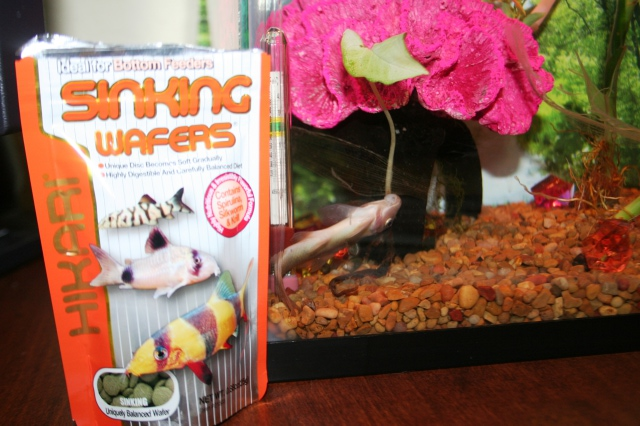 Chinese Sucker fish is sick!
Question
Chinese Suckerfish
4 fish in the 5 gall
Chinese Sucker fish is sick!
Question
Chinese Suckerfish
4 fish in the 5 gall
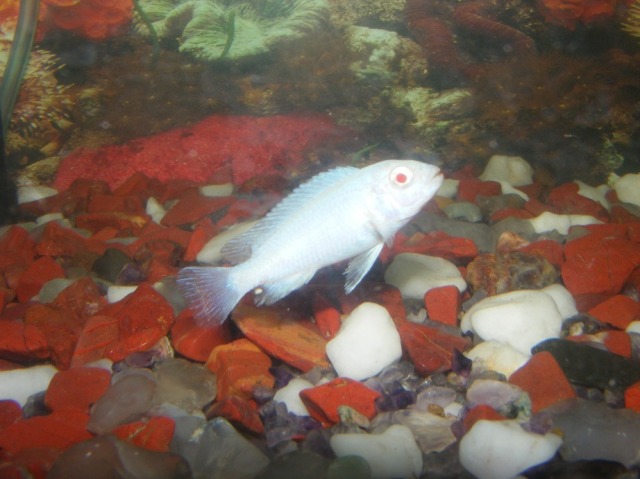 Cichlid identification
Question
Moonlight cichlid (?)
Sir,
Please have a look
Cichlid identification
Question
Moonlight cichlid (?)
Sir,
Please have a look
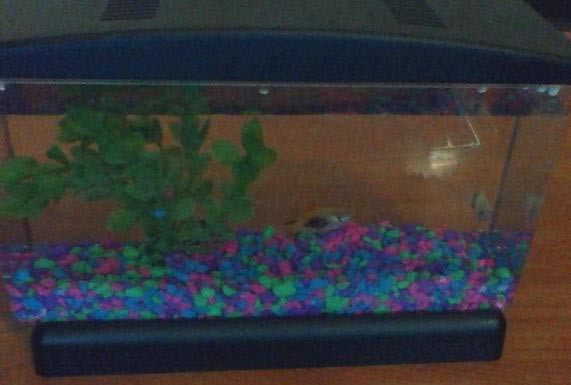 Molly Fish
Question
Fish tank Black fish
I have 4 ne
Molly Fish
Question
Fish tank Black fish
I have 4 ne
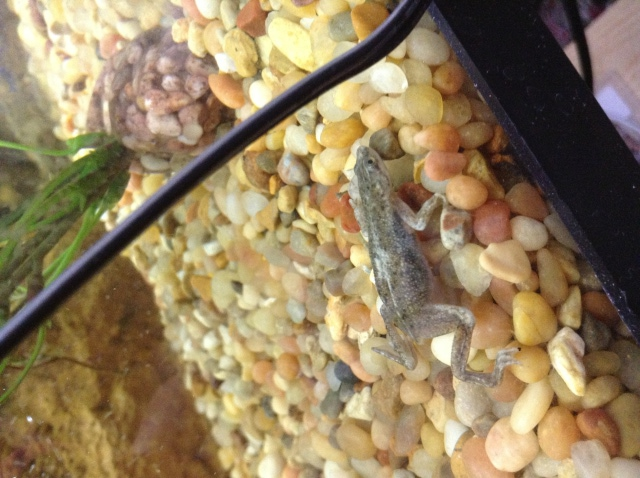 African dwarf frog
Question
Side/top Front
My African dwarf
African dwarf frog
Question
Side/top Front
My African dwarf
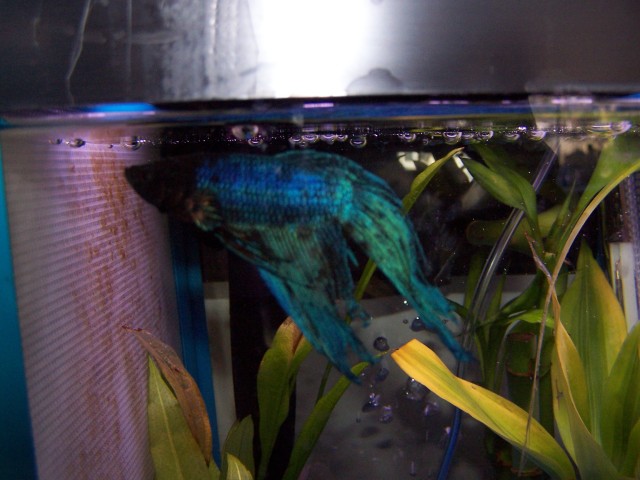 Betta Fish disease
QuestionMax
QUESTION: Hi Ron, I have been resear
Betta Fish disease
QuestionMax
QUESTION: Hi Ron, I have been resear